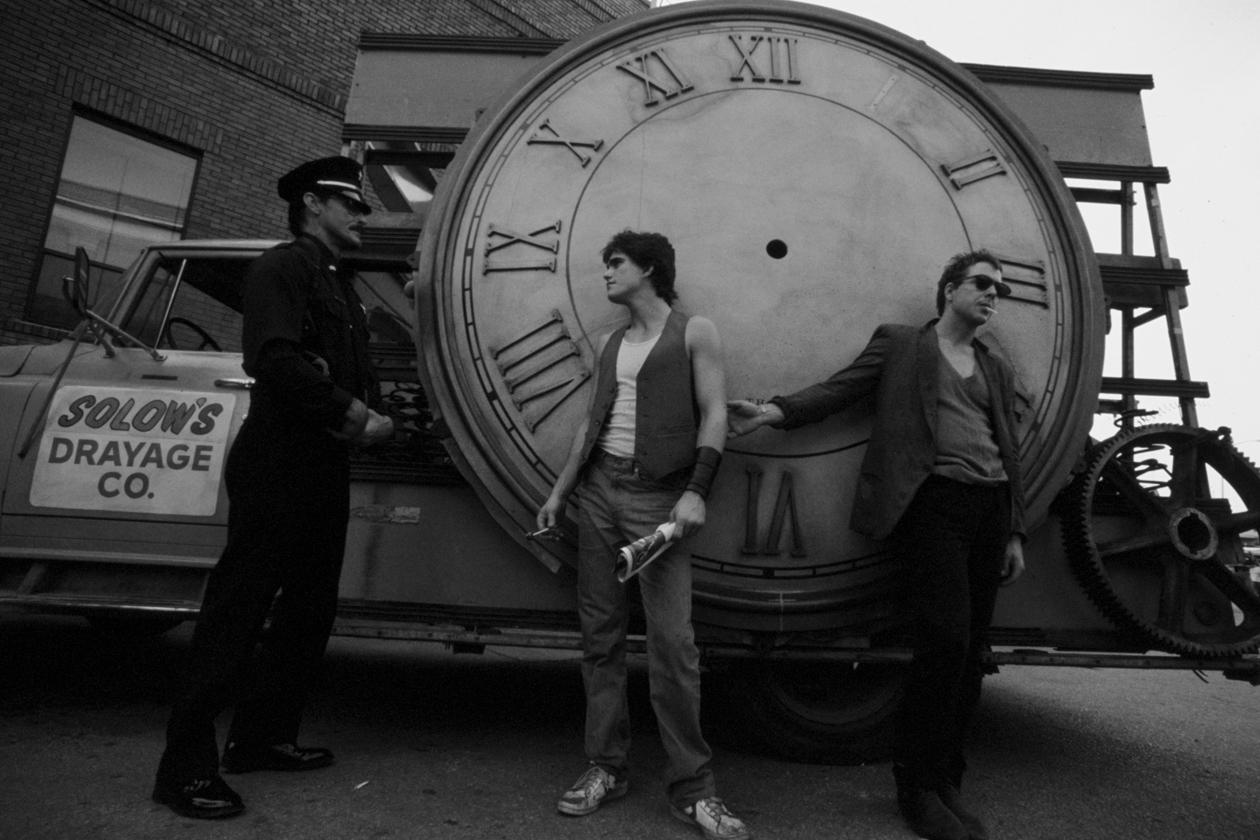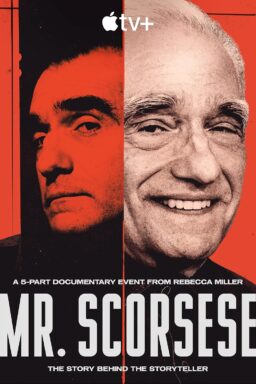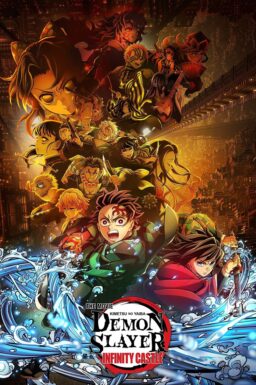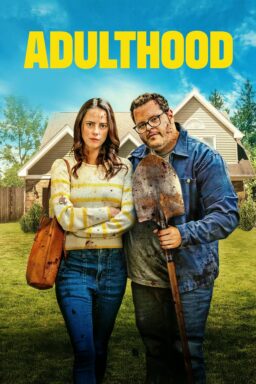Of all the major contemporary American filmmakers of note, Francis Ford Coppola is perhaps the biggest gambler of the bunch, coming up with wildly ambitious projects that he would cheerfully stake his money and reputation on. Sometimes the results were wildly successful (such as the “Godfather” films and “Apocalypse Now”), and sometimes they were a massive failure (such as “One from the Heart,” his glorious and foolhardy 1982 musical). Among the strangest gambles of his career occurred in the early 1980s, when he was still in the “One from the Heart” hole and needed work to repay his debts, when he bizarrely elected to take on a project that, with a cast full of brooding young stars on the rise, could have easily become a piece of ordinary teen exploitation destined to be a big hit with the Tiger Beat set. Instead, Coppola transformed it into a brooding and overtly autobiographical work that was essentially an art-house film aimed at teenagers, arguably the least likely set of moviegoers to ever step foot in an art-house theater.
The film, of course, was “Rumble Fish.” When it opened in 1983, not only did audiences—including cineastes who might’ve normally gone to the latest Coppola provocation—stay away in droves but it horrified studio executives who witnessed how what should have inspired a hit film was transformed it into a weirdo art movie that no one apparently wanted to see. The failure did him no favors and led him to spend the rest of the decade as a director-for-hire on projects over which he had little control before finally agreeing to make “The Godfather: Part III,” a project he had previously sworn he would never do under any circumstance. And yet, the strange allure of this film has not dimmed at all in the 30+ years since it first came out. Now it has become a part of the Criterion Collection and with any luck, enough people will get a look at the film and realize that, rather than the dubious flop that it has been described in some quarters, it is actually one of Coppola’s finest and most distinctive films of his entire career.
“Rumble Fish” was the brainchild of Susan Hinton, an Oklahoma native who, while still in her teens, wrote and published, under the name S.E. Hinton, The Outsiders, a novel aimed squarely at teen audiences (decades before YA become a hugely popular genre) that was inspired by a couple of rival gangs at her high school. Rumble Fish, published in 1975, was set in Tulsa and centered around two brothers, the impetuous teenaged hood Rusty James and his older brother, known only as Motorcycle Boy, a legendary former gang leader in the neighborhood who has been away for a while. Rusty plainly worships Motorcycle Boy and aspires to be exactly like him. As the story begins, he hopes to step into his brother’s shoes by agreeing to fight Biff, the leader of a rival gang—this despite the fact that Motorcycle Boy had brokered a truce that forbade such gang fights before taking off. During the brawl, Motorcycle Boy makes a dramatic and unexpected return. Over the course of the next few days, Rusty loses everything that he once considered to be important to him—his girlfriend, his friends, control of his gang, his sense of self-confidence and eventually even Motorcycle Boy himself. However, it seems that the lessons that Motorcycle Boy was trying to impart did take root and there is the sense that Rusty will also manage to break away from both his own self-destructive tendencies and the expectations that others developed for him.
Of the four books upon which Hinton based her reputation, (including That Was Then, This Is Now and Tex), the admittedly bleak and dour “Rumble Fish” was by far the least popular of the bunch but one person who did respond to it was Francis Ford Coppola. At the time, he was working on his first film in the wake of the “One from the Heart” imbroglio, an adaptation of Hinton’s The Outsiders—the story goes that he became interested in the project when he received letters from a class of high school students imploring him to make a movie of their favorite book. While working on the film, he read Rumble Fish and was struck by the personal connection that he felt regarding the book’s central relationship between Rusty and Motorcycle Boy—like Rusty, he too had an older and more accomplished brother, August. As he was working in a plainly melodramatic manner with “The Outsiders”—“Gone with the Wind” was considered one of its cinematic influences—he saw “Rumble Fish” as a way of satisfying the more artistic side of his personality and eventually found himself looking at it as a treat for himself once he finished the more frankly commercial-minded “The Outsiders.” He and Hinton began writing the screenplay during days off from the “Outsiders” shoot and he planned to piggyback its production on top of “The Outsiders” by picking up immediately where that one left off and by utilizing much of the same production crew and a few of the same actors. There was a hiccup when Warner Brothers, who had been funding “The Outsiders,” were less than impressed with an early cut of that film and declined to fund the second film. Undeterred, Coppola continued on with the project and did several weeks of pre-production work, including two weeks of rehearsals in order to shoot a rough version of the film on video to serve as a guideline, before Universal agreed to put up the money for it.

If Warner Bros. had problems with “The Outsiders,” then one can only imagine the bafflement of Universal when they got a look at “Rumble Fish.” Instead of the warmly nostalgic hues that he deployed for “The Outsiders,” cinematographer Stephen H. Burum used black-and-white photography, save for the striking color images of the pair of fish that give the film its title, and employed such tricks as hand-held cameras and shadows painted on the walls to give the film the stark and sometimes surreal expressionist look often found in German films of the Twenties such as “The Cabinet of Dr. Caligari” and “M.” For the brutal fight scene in the beginning between Rusty and Biff, he brought in famed choreographer Michael Smuin to help him stage it as a sort of violent ballet. Instead of the collection of pop hits that one might expect to hear on the soundtrack, Coppola hired Stewart Copeland, the drummer for The Police, to put together a score in which the percussion was the dominant sound, as a way of reminding viewers about the fleeting nature of time and how that ties in how Rusty, by continuing to live in the past, is now himself running out of time. This was a film that was not only as far removed in every possible aspect from the more classically styled “The Outsiders” and virtually every teen-oriented film that came before it, it bore virtually no resemblance to any American-made studio film produced during that time.
These stylistic gambits may have be seen as a willfully perverse exercise in audience alienation on Coppola’s part when it first came out, but what may have been dismissed as pretension back in 1983 now plays beautifully today. Burum’s cinematography is an equally gorgeous and eerie tour de force that is as perfect of an argument one could possibly hope for regarding the viability of black-and-white cinematography in contemporary film. Color photography might have lured a few more people into the theater but it would have certainly changed the film as a whole and not for the better. This is, after all, a movie where the two main characters see everything only in black-and-white—literally in the case of the color-blind Motorcycle Boy and metaphorically in the case of Rusty, who can only view every aspect of his life through a veneer of toxic masculinity that prevents him from seeing that there is a lot more nuance to the world that he is willing to accept for the longest time. Likewise, the percussive soundtrack is also pretty striking in the way that it subtly reinforces the notion of time rapidly slipping away even as Rusty James’ entire life seems to be standing still. As for the ballet-inspired rumble at the beginning, I realize that my description of it probably makes it sound faintly ridiculous, like a more-humorless-than-usual version of “West Side Story,” but the combination of the beautifully staged and controlled movements and is infinitely more memorable than a more conventional sequence of violence could have possibly hoped to be.
These elements are all impressive but it is Coppola’s deeply personal feel for the material that gives “Rumble Fish” its greatest power and keeps it from being a good-looking but dramatically empty exercise in style. Obviously the material did not originate with him but it clearly did resonate with him in ways that even an overtly autobiographical work might have been unable to fully capture. The material, save for a few tweaks here and there, is more or less the same as in the book. But as one watches Rusty as he spends his days living in the shadow of the more accomplished older brother that he both admires and envies, even as that very same focus of his admiration continues to insist that the things that he looks up to him for are not that important in the long run, you get the sense that Coppola has gone through the exact same feelings in his own life that Rusty has in his. As a result, “Rumble Fish” feels like one of the most nakedly personal of all of Coppola’s films and indeed, when he revisited similar material nearly three decades later with the original work “Tetro,” that film, while an undeniably impressive achievement on its own, nevertheless felt like a rehashing of themes that he had already explored to haunting effect here.

One of the main reasons that “The Outsiders” is remembered today is because Coppola had the good luck to cast it with a number of up-and-coming actors who would quickly go on to become huge stars—that one film was an important stepping stone for the likes of Tom Cruise, Matt Dillon, Patrick Swayze, Diane Lane, Emilio Estevez, Ralph Macchio, Rob Lowe, and C. Thomas Howell alone. Although “Rumble Fish” doesn’t often get credited for it, it too was blessed with an unusually strong collection of young actors who all deliver strong and credible performances. Although Dillon was already an established star by the time he made this film, having also appeared in such movies as “Over the Edge,” “My Bodyguard” and the S.E. Hinton adaptation “Tex,” “Rumble Fish” was perhaps the first that really showed off his considerable strengths as an actor in the way that he captures all the furtive, headlong energy and emotional turmoil of Rusty as he struggles to find his place in the world without simply giving audiences the James Dean impression that others might have supplied. On paper, Motorcycle Boy seems like an almost impossible character to portray—a walking enigma who is always speaking in philosophical aphorisms and who may indeed be more symbol than man—but Mickey Rourke finds just the right notes to play him so that he seems world-weary and otherworldly in equal measure; he practically burns up the screen with his astonishing charisma and intensity. Among the supporting players, the movies sees fine performances from the likes of Diane Lane as Rusty’s sometimes girlfriend, the then-little-known likes of Nicolas Cage (Coppola’s nephew and the son of August), Chris Penn and Vincent Spano as members of Rusty’s gang, Laurence Fishburne as a local go-between and Sofia Coppola, billed as Domino, who is funny and charming in a few brief scenes as Lane’s bratty younger sister. As the few older characters of note in the story, Diana Scarwid is heartbreaking in her few scenes as a former flame of Motorcycle Boy who clearly has not gotten over him, the inimitable Tom Waits as the owner of the local pool hall where Rusty and his friends hang out and a pre-rehab Dennis Hopper, whose manages, despite his condition, to turn in a powerful, if brief, characterization as the alcoholic father of Rusty and Motorcycle Boy who loves his sons but has been utterly useless to them for so long that he hardly knows how to deal with them anymore.
“Rumble Fish” is a great and bold film from one of the greatest and boldest American filmmakers of our time and if the majority of people were unable to recognize its greatness when it was unleashed on an unsuspecting public 34 years ago, time, ironically enough, has proven to be extraordinarily kind to it, as can be seen by it ascension to the Criterion Collection, one of only two of Coppola’s films to receive that honor to date (the other being a long-out-of-print laserdisc of “Bram Stoker’s Dracula”). Among the archival materials found in this special edition are an informative audio commentary recorded by Coppola for a 2005 DVD release, featurettes on the production of the film and its score from that same release, interviews from 1983 with Dillon, Lane and Spano, a nifty 1984 interview of Mickey Rourke done for French television, a 2013 documentary about the film and its impact, a collection of deleted scenes and the music video for Copeland’s “Don’t Box Me In.” Of the new features on display, the most impressive is the remarkable 4K transfer supervised by Coppola and Burnum that is beautiful beyond belief. There are also new interviews with Coppola, Hinton, Dillon, Lane, Burum and production designer Dean Tavoularis, an essay by our own Glenn Kenny and a new video essay on the existential undercurrents running throughout the story. All together, they make “Rumble Fish” a must-own disc that will hopeful help to restore the film to its proper and well-deserved place as one of the most important and dazzlingly original works of Coppola’s entire career.
To order your own Criterion Collection Blu-ray of “Rumble Fish,” click here.












